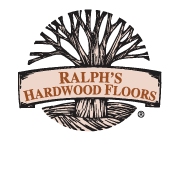Different flooring materials require different maintenance methods. But did you know that not all wood flooring is cared for the same, despite all being made from wood? This is because not all wood flooring has the same finish. Here’s a guide on how to care for different wood flooring finishes.
Factory-finished Floors
Factory-finished flooring is sanded, stained, and finished with a coating at the factory. Because all the finishing touches are done, all that is needed once it’s delivered to the site is the installation. Factory-finished floors include various types of finish, including aluminum oxides, urethanes, penetrating oils, Teflon-infused, and acrylic impregnated. And the way to care for your factory-finished floors will depend on the flooring manufacturer’s recommendations. It’s important to follow the manufacturer’s guidelines for cleaning, particularly when using cleaning products. Not following the manufacturer’s directions could not only result in ruining and damaging your floors but will also void the manufacturer’s warranty.
Site-finished Floors
Site-finished floors are, as the name implies. These floors are finished with oil-modified urethane, waterborne urethane, moisture-cured urethane, conversion varnish, or UV-cured finish – all of which are film-forming finishes and form a protective film of finish over the wood flooring.
We will provide recommendations on how to clean site-finished flooring based on the finish’s manufacturer’s recommendations. Never use sheet vinyl or tile floor care products on wood floors. Self-polishing acrylic waxes may cause wood flooring to be too slippery to walk on and may also result in the floor’s dull appearance. Non-waxed surface finishes should never be waxed. If your floors have a waterborne finish, never use petroleum-based cleaners.
If you don’t know the specific finish that was used, the best approach would be to use a wood floor cleaning product like Glitsa Clean, which was designed specifically for wood flooring. Follow the cleaning product’s recommendations, as excessive cleaning with any product, can also damage your wood floors. Whatever the finish of your site-finished floors, do not use household dust treatments and never use vinegar; vinegar is acidic and will degrade any floor finish.
Natural Oil Floors
Compared to conventional finishes, natural oil finishes penetrate the wood deeper, making it more stable and less likely to react to fluctuating temperature and humidity. Oils in naturally oiled floors typically use oxidizing oils such as tung, linseed, and vegetable oil. The oils penetrate the wood at varying degrees, which fill and surround the wood fibers.
Maintaining natural oil floors requires specific products, which the manufacturer will recommend. They will also recommend a specific maintenance routine, which typically involves oils and soaps. To safely and effectively remove loose debris from the floor’s surface, you can use a dry microfiber mop. If you fail to follow the manufacturer’s recommendations, you’ll likely end up with floors that don’t appear or perform as they should. Periodically, the oil finish may need to be reapplied.
Waxed-finished Floors
Waxed-finished floors use wax, which soaks into the wood’s pores, hardening to form a penetrating protective seal. These floors are similar to oiled floors in the sense that they should never be cleaned with water-based cleaners. Only use the specific products recommended by the manufacturer or floor installer. Only use solvent-based waxes, buffing pastes, or cleaning liquids made specifically for wax-finished floors.
There’s also the risk of over-waxing wood floors, causing the floor to be dull. Instead, buff the floor. Check hidden areas, such as under furniture, to ensure there is no wax build-up. If you notice water spots on the floor, use fine steel wool or synthetic pad to rub the area gently in a circular motion. Once the spot is gone, you can re-wax the area and buff it.















